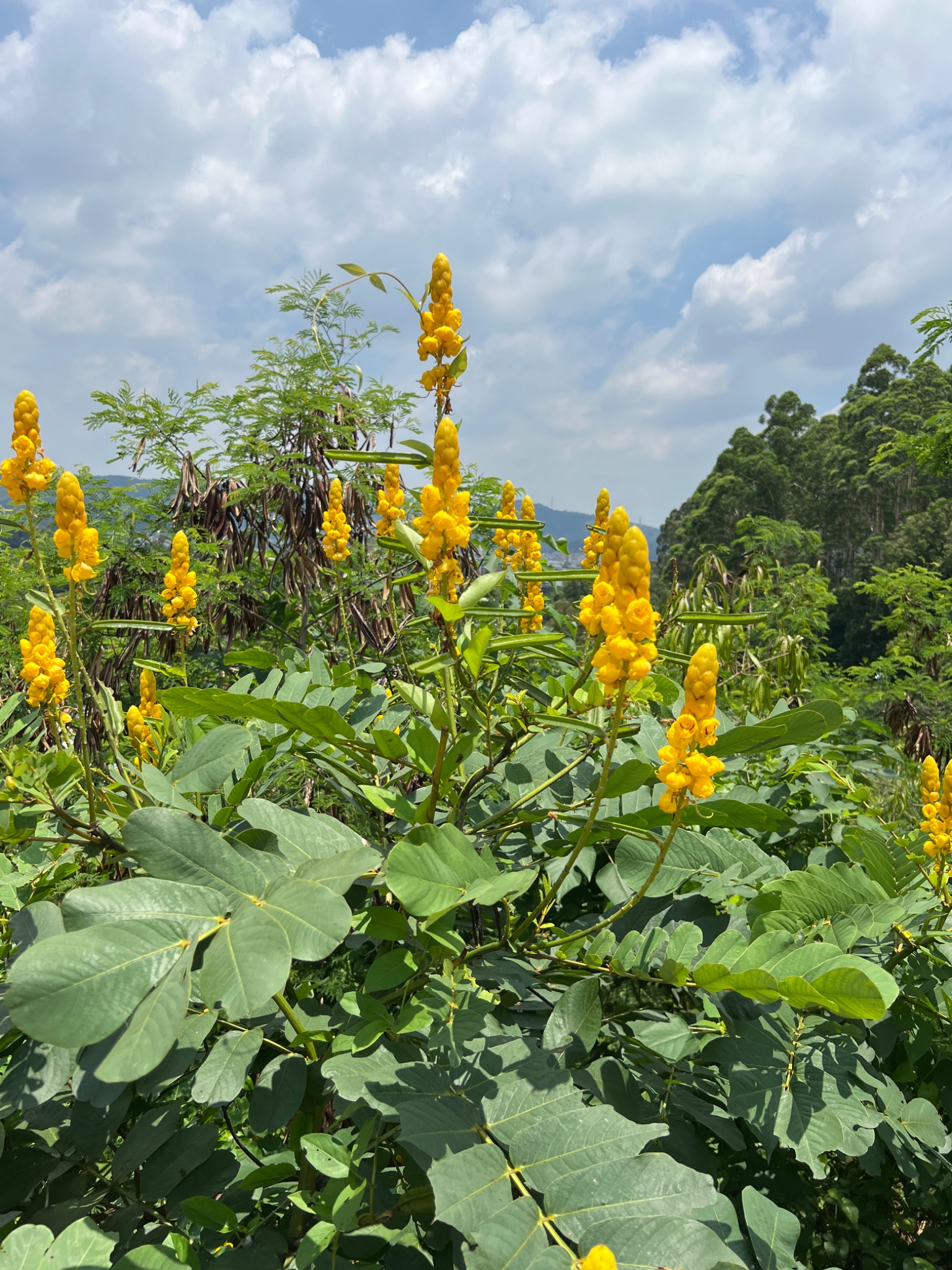The Radiant Candle Bush
Failed to generate audio
The striking yellow flowers you see here belong to the plant *Senna alata*, often known by its more intriguing names like Candle Bush, Candlestick Plant, or even Imperial Palm. These names are inspired by the way the flowers are clustered. Each upright spike of bright yellow florets gradually opens from the bottom to the top, resembling a candle or a torch.
This plant is native to tropical regions of the Americas, but its beauty and surprising medicinal properties have led to its widespread cultivation in many tropical and subtropical areas around the world, particularly in Africa and Asia. It's often grown as an ornamental plant in gardens for its vibrant blooms, but it's also highly valued in traditional medicine. For centuries, various parts of the Candle Bush, especially its leaves, have been used to treat a range of ailments, from skin conditions and fungal infections to digestive issues. In some cultures, it's even used as a natural laxative. Its broad leaves, which you can clearly see, have a distinctive appearance, often described as overlapping or compound. The seed pods, which you might notice in the background, are long and dark brown when mature, further adding to the plant's unique look.
The Medicinal Candle Bush
Failed to generate audio
This striking plant is likely *Senna alata*, commonly known as the Candle Bush, Empress Candle Plant, or Candlestick Plant. It's recognizable by its large, ovate leaves and distinctive upright clusters of bright yellow flowers that resemble thick candles, which later develop into long, dark seed pods.
Native to tropical regions of the Americas, this plant is widely cultivated in warm climates around the world, particularly in Southeast Asia and Africa, for its ornamental beauty and traditional medicinal properties. In various cultures, it has been used as a natural laxative, antifungal, and antibacterial agent, especially for treating skin conditions like ringworm and scabies. Its leaves and flowers contain compounds like rhein, which contribute to these effects.
Candle Bush (Cassia alata)
Failed to generate audio
This is likely the Cassia alata, commonly known as Candle Bush or Senna alata. A fast-growing shrub in the pea family, characterized by its striking yellow flower spikes resembling candles. Native to tropical Americas, it's widely planted for ornamental purposes and has a long history in traditional medicine, particularly for its antifungal properties to treat skin conditions like ringworm. Also known as "Ringworm Bush."
